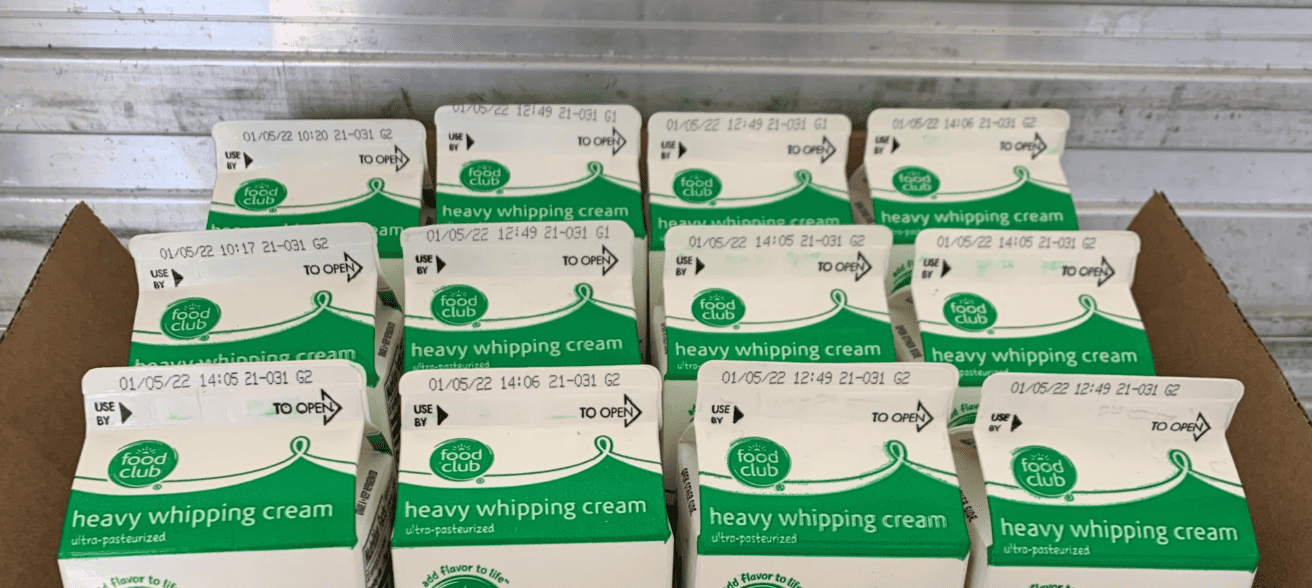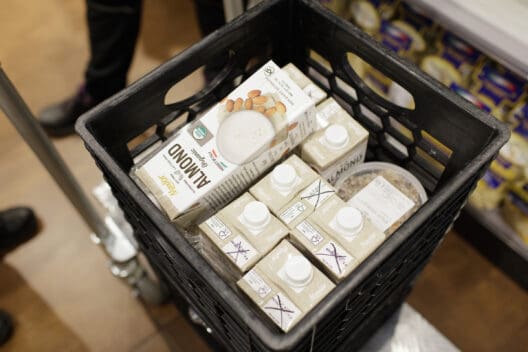What you need to know about “expiration dates”

Recently, a member of our team – who shall remain nameless to protect the guilty – confessed something many of us could relate to: “Before I worked around food (and food people!) I went for the milk at the far back of the grocery store fridge. ‘You could feel good about Hood,’ I thought, but you could feel better if it’s the very newest gallon! So, arm-deep, I bypassed the jugs dated two weeks from now in favor of ones dated three. Leave the ‘old’ product for a less savvy consumer. Or so I thought – because I was the less savvy consumer.”
Live and learn: We now know that date labels like “best by,” “sell by,” and “use by” are a source of incredible confusion for shoppers and eaters everywhere and that misinterpreting what they mean very often leads to the tossing of perfectly edible food – with about 48% of wasted food happening in homes. That has an impact on people, the planet, and our pocketbooks.
So what do date labels actually mean? How do we use them? What purpose do they serve? How did we get here? Let’s dive in!
First things first: Date labels are not “expiration dates” – with one exception.
The exception is infant formula.
Otherwise, says the Food Safety and Inspection Service of the U.S. Department of Agriculture, those dates on the side of food packaging are a manufacturer’s recommendation for when that food is likely to be of the very best quality. They have zip to do with food safety – and they aren’t federally regulated.
Use date labels like a benchmark, in other words, but not the final arbiter of what’s good. Here’s the guidance we give our nonprofit partners about the ranges within which food is usually just fine even though it’s past-dated.
Apply your senses (including common sense) to decide whether something is good to eat.
This goes for food that has yet to reach the date on the label. Look at it. Hold it in your hands. Take a sniff or maybe even a little taste. This is how our grandparents and great-grandparents managed in the days before date labels.
If food hasn’t been stored properly, if it’s leaky or moldy, if it smells other than the way you think it should, don’t pass go! Otherwise, eat up!

Also – pro-tip! – there’s a lot you can still do with food that is on its way out.
First, you can store it properly to make it last longer. More here.
Also, if you happen upon food that is slightly bruised/wilted/soggy/imperfect-but-still-good remember this: Every single day here at Spoonfuls, our nonprofit partners, like Amal Women’s Center and Haley House, very successfully take that food (because it’s still good!) and turn it into something delicious. You can do this, too.
Here are just two sources of inspiration for breathing new life into your elder veggies/fruits and leftovers: Food Waste Feast’s Hero Recipes and this video from Delish.
So how’d we get here anyway?
Date labels in the United States are a product of relatively recent history involving, albeit peripherally, Al Capone.
That Al Capone. Back in the 1930s (possibly/maybe motivated by a family member’s foodborne illness), Capone lobbied local government in Chicago to pass a law requiring date labels on milk.
But it wasn’t until much later, well into the 1970s (during some of our lifetimes, in other words), that date labels started appearing on other products driven by consumer demand for fresh food. The trouble was – and is! – that: 1) absent federal standards, there’s no shared understanding for how date labels are applied and interpreted (different states have different requirements for what foods require a label and even for how long a product can be sold past that date) and 2) absent shared understanding for what those dates mean, there’s a widespread misperception that past-dated products equal bad ones.
Curious about how date labels are applied here in Massachusetts? Check this out.
The silver lining: There’s some important legislation in the works.
Thankfully, it isn’t just those of us in food rescue who are talking about the trouble with date labels and their impact on wasted food.
One bipartisan bill to watch at the federal level is the Food Date Labeling Act. Provisions around date labeling were also included in the Agriculture Resilience Act.
In Massachusetts, An Act Decreasing Food Waste by Standardizing the Date Labeling of Food is currently in committee.
Here’s what else you can do if you care about wasted food.
Apart from being a savvy consumer (one who doesn’t automatically opt for the milk at the back of the grocery store fridge), here are two more things you can do.
1. You can share what you know! From stories on social media (like this one) to talking with friends and family about how you come to your purchasing decisions, you have the power to influence others. Case in point: Said one member of the Spoonfuls team, “I swear by actively involving my child in grocery shopping. Maybe one day I’ll be the voice in their head when they’re doing their own shopping, and they’ll give the day-old bread a chance!”
2. You can speak up in support of policies and legislation that matter – and hold your elected officials accountable (read: vote)! Sign up for and stay tuned to our Advocacy Alerts for specific opportunities to lend your voice or your “voice” (because letters and e-mails are good, too!) to evolving legislation.